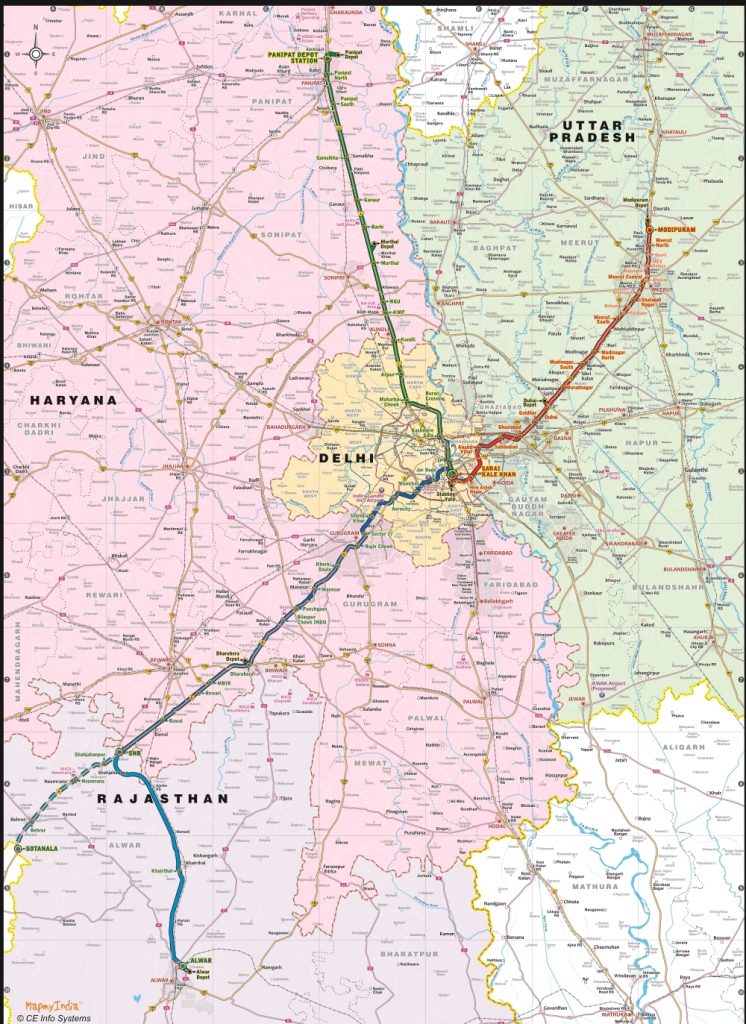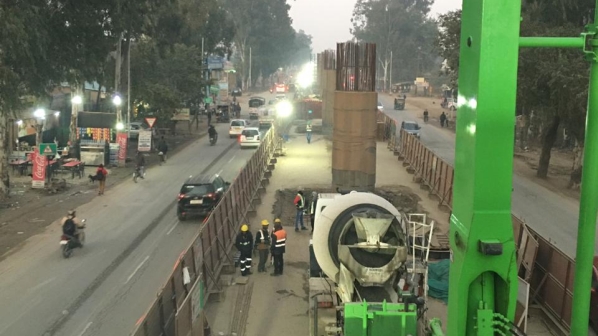First announced in 2005 as part of a strategy to decongest New Delhi and promote industrial, commercial and regional development in the National Capital Region, the Indian government plans to construct eight lines.
Work on three lines - the 82km Delhi - Meerut line, the 192km Delhi - Gurugram - SNB - Alwar line and the 103km Delhi - Panipat line - was prioritised, with civil construction work on the first 17km of the Delhi - Meerut line now underway at a cost of Rs 302bn ($US 4.2bn).
The three standard-gauge double-track corridors, which will be ballast-free, will have six depots, serving an estimated 2 million passengers daily. The project will improve operations significantly, with mail and express trains on the routes currently operating at an average of 52km/h.

Trains will consist of 3.2m-wide, 22m-long stainless steel or aluminium coaches, with economy class and one business class coach on each service.
International tenders for the acquisition or manufacture of 210 EMU cars, worth an estimated Rs 20bn, have been launched, and are scheduled to be opened next month. Approximately 30% of the rolling stock will be imported, with the remaining fleet manufactured in India under a transfer of technology arrangement.
The equity structure of the National Capital Region Transport Corporation (NCRTC) is similar to other metro companies, with the Indian government and the regional states holding 50:50 shares of the equity.
“The Indian government may well have approved the project in 2005, but I would not say that it has been delayed,” NCRTC managing director, Mr Vinay Kumar Singh, told IRJ. “It was only in July 2013 that NCRTC was established and I only took over in July 2016. Prime minister Mr Narendra Modi eventually sanctioned the project in March last year.”
The project has drawn strong interest from global manufacturers. Representatives from Siemens, Alstom, Bombardier, CAF, Mitsubishi and Hyundai-Rotem were among around 40 global companies represented at a pre-bid conference organised by NCRTC.
As a first of its kind project for India, global expertise will be needed from countries that operate similar systems, such as Paris’ RER, London’s Crossrail, Cernanias in Madrid and regional services in Berlin, Tokyo and Beijing, Singh says.
Around 11km of the Delhi - Ghaziabad - Meerut RRTS will be elevated, while 11.53km will be underground. The plan also incorporates construction of the Meerut Metro Corridor-I (North-South corridor).
“The Uttar Pradesh government dropped its earlier proposal to construct a separate metro line by deciding to incorporate the plan within the RRTS system,” Singh says. “This has resulted in overall cost savings of Rs 63bn.”
Geo-technical investigation and utility diversion works to construct the metro line are at an advanced stage, while work on detailed design and station architecture is in progress.
- An in-depth interview with CRTC managing director, Mr Vinay Kumar Singh, will appear in the April issue of IRJ. Subscribe here.
For detailed information on rail tenders around the world, subscribe to IRJ Pro.

